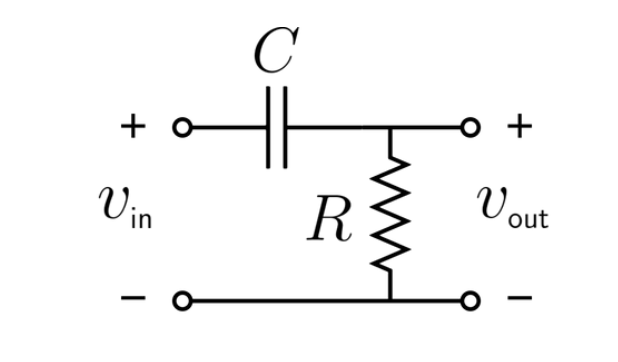 Home
Home
 Back
Back

Definition: This calculator computes the cutoff frequency (\( f_c \)) for an RC high-pass filter, a basic electronic circuit that allows high-frequency signals to pass while attenuating low-frequency signals.
Purpose: It is used in electrical engineering to design RC high-pass filters for applications like audio processing, signal conditioning, and noise filtering, where low-frequency signals need to be removed.
The calculator uses the following formula:
Where:
Steps:
Calculating the cutoff frequency of an RC high-pass filter is crucial for:
Example 1: Calculate the cutoff frequency for an RC high-pass filter with \( R = 1 \, \text{kΩ} \) and \( C = 1 \, \text{µF} \):
Example 2 (Demonstrating Scientific Notation): Calculate the cutoff frequency for an RC high-pass filter with \( R = 1 \, \text{MΩ} \) and \( C = 1 \, \text{pF} \):
Q: What is an RC high-pass filter?
A: An RC high-pass filter is a simple electronic circuit consisting of a resistor (\( R \)) and a capacitor (\( C \)) that allows high-frequency signals to pass while attenuating low-frequency signals below a certain cutoff frequency.
Q: Why is the cutoff frequency important?
A: The cutoff frequency (\( f_c \)) determines the point at which the filter starts to attenuate low-frequency signals. It is critical for ensuring the filter performs as intended in applications where low-frequency noise needs to be removed.
Q: How does the capacitor’s impedance affect the filter’s performance?
A: The capacitor’s impedance (\( Z_c \)) decreases with increasing frequency, allowing high-frequency signals to pass through more easily. For low frequencies, the impedance is high, effectively blocking those signals.